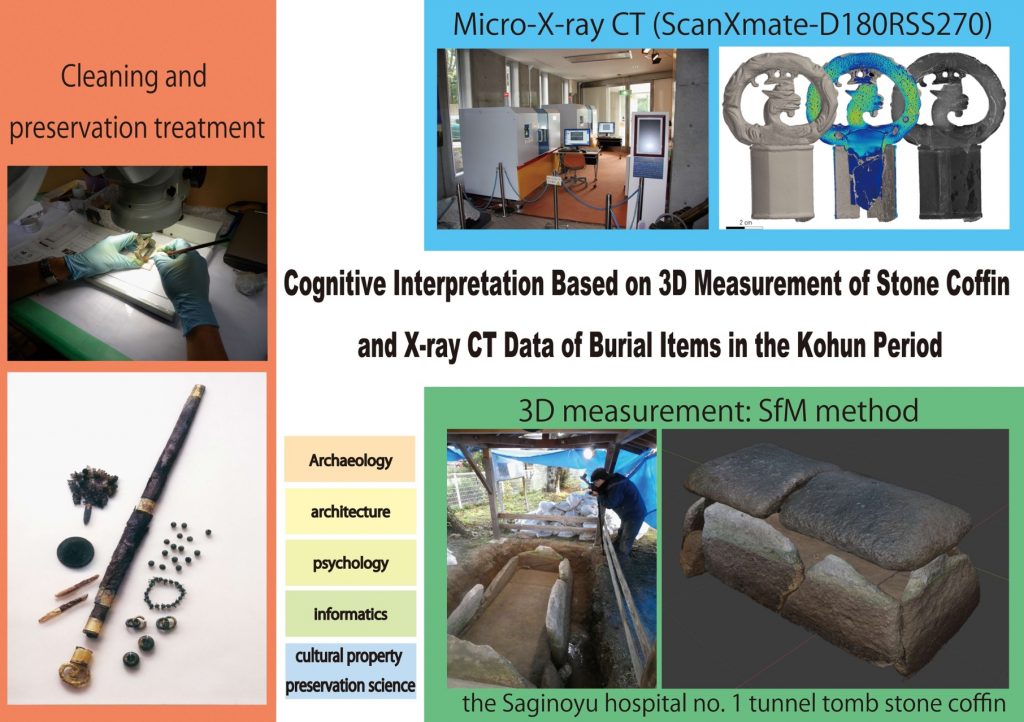This is an interdisciplinary study of archaeology, architecture, cultural property preservation science, psychology, and informatics. The main targets are burial mounds named “Kohun”, specifically the Saginoyu Hospital tunnel tombs in Shiname Prefecture. The burial goods containing metal and wooden items were taken to Tohoku University in the 1920s and stored in the museum. Cleaning and preservation treatment of metal items in the stone coffin was carried by the staff of archaeological research office on the campus of Tohoku University applying the techniques of conservation science. Grave goods were analyzed using micro-X-ray CT at the Tohoku University museum to understand their inner structure. They were also measured by XRF to understand their elemental compositions. The house-shaped stone coffin found from the Saginoyu hospital tunnel tomb was relocated to a nearby elementary school just after the discovery. We measured it using structure from motion (SfM) method and got its 3D data. The characteristics of burial items and the stone coffin show the cultural, social, and blood-related group relationships in the latter half of 6th century to the first half of 7th century. In the future, the characteristics of the structure inside and outside the Saginoyu hospital tunnel tomb will be understood from the viewpoint of archaeology, architecture and environmental geography. Furthermore, we will clarify the characteristics of the tunnel tomb by applying the psychological viewpoint of human vision. We will also use informatics methods to order to utilize the large amount of acquired data efficiently and stably. A huge amount of data on the Kohun period has already been accumulated in recent years, and we aim to integrate our data with them. Therefore, we hope to present a new perspective and practical method for utilization of large-capacity 3D data in archaeology.
THEME
Cognitive interpretation based on 3D measurement of stone coffin and X-ray CT data of burial items in the Kohun period.
- 代表者
- Yoshitaka Kanomata(Graduate School of Arts and Letters)

